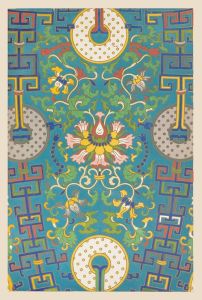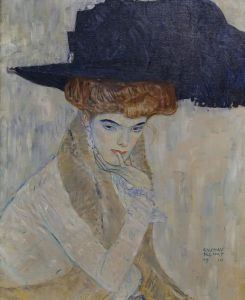
Bildnis einer unbekannten Frau
A hand-painted replica of Gustav Klimt’s masterpiece Bildnis einer unbekannten Frau, meticulously crafted by professional artists to capture the true essence of the original. Each piece is created with museum-quality canvas and rare mineral pigments, carefully painted by experienced artists with delicate brushstrokes and rich, layered colors to perfectly recreate the texture of the original artwork. Unlike machine-printed reproductions, this hand-painted version brings the painting to life, infused with the artist’s emotions and skill in every stroke. Whether for personal collection or home decoration, it instantly elevates the artistic atmosphere of any space.
Gustav Klimt, an Austrian symbolist painter, is renowned for his distinctive style and contribution to the Vienna Secession movement. Among his extensive body of work, "Bildnis einer unbekannten Frau" (Portrait of an Unknown Woman) is a painting that, as the title suggests, features a woman whose identity remains unknown. This piece is a testament to Klimt's fascination with the female form and his ability to capture the enigmatic allure of his subjects.
Klimt was born in 1862 in Baumgarten, near Vienna, and became one of the most prominent figures in the art world during the late 19th and early 20th centuries. His work is characterized by a blend of symbolic, erotic, and decorative elements, often incorporating gold leaf, intricate patterns, and a rich color palette. Klimt's portraits, in particular, are celebrated for their sensuality and psychological depth.
"Bildnis einer unbekannten Frau" exemplifies Klimt's mature style, where he often focused on the portrayal of women, capturing their beauty and complexity. The painting showcases Klimt's typical use of elaborate patterns and textures, which serve to highlight the subject's presence and create a sense of intimacy and mystery. The woman's expression and posture are poised yet enigmatic, inviting viewers to ponder her story and the context in which she was painted.
Klimt's approach to portraiture was innovative for his time. He often eschewed traditional backgrounds and instead enveloped his subjects in abstract, decorative elements that both complemented and contrasted with their forms. This technique is evident in "Bildnis einer unbekannten Frau," where the background and the woman's attire are intricately detailed, drawing attention to her face and expression.
The painting reflects Klimt's broader artistic themes, including his interest in the interplay between reality and fantasy, as well as his exploration of the human psyche. Klimt's work often delved into themes of love, beauty, and mortality, and his portraits of women frequently embodied these concepts, presenting them as both ethereal and grounded figures.
While specific details about "Bildnis einer unbekannten Frau" are scarce, the painting remains a significant example of Klimt's oeuvre. It highlights his mastery of portraiture and his ability to convey the inner world of his subjects through visual means. The anonymity of the woman adds an additional layer of intrigue, allowing the painting to transcend its time and continue to captivate audiences.
Klimt's influence on the art world is undeniable, and his works, including "Bildnis einer unbekannten Frau," continue to be studied and admired for their innovative style and emotional depth. His legacy endures through his contributions to modern art and his ability to capture the essence of his subjects with unparalleled skill and sensitivity.


















